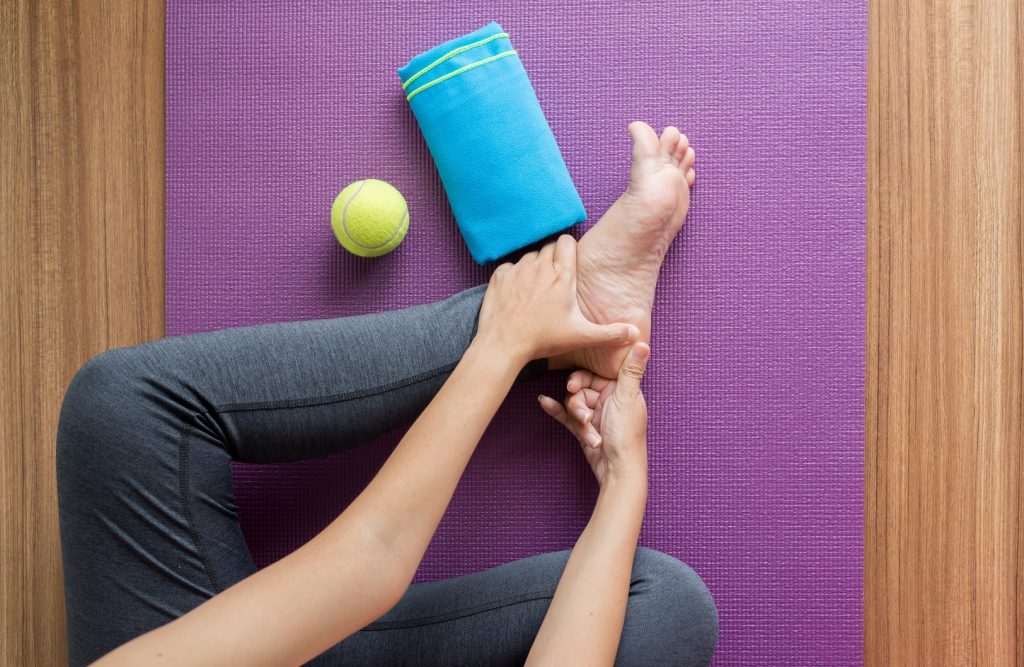
Doctors Share 3 Tips for Running with Plantar Fasciitis
Running with plantar fasciitis can be extremely painful and even dangerous. Plantar fasciitis is an inflammation of the plantar fascia, a thick band of tissue that runs along the arch of your foot from the heel to the toes. This condition can be a huge issue for many people and can greatly affect their exercise regimen. Plantar fasciitis often generates stabbing heel pain, making each stride on the treadmill a difficult one. Michael King, a podiatrist practicing in Fall River, Massachusetts, said he sees 18 to 20 patients per day with plantar fasciitis, according to the Los Angeles Times. Running with plantar fasciitis can be hard and while this heel pain affects many runners, it doesn’t have to be something that slows down your workout.
1) Make Sure You Have The Right Shoes
It’s important that you’re wearing comfortable and supportive shoes, even when you’re not working out. The wrong shoes only contribute to the pain during exercise. “Flip-flops seem to be a major source of foot pain,” Elizabeth Kurtz , a podiatrist who practices in Chicago, told the Los Angeles Times. “Worn-out shoes that have lost their cushioning are another culprit.” The bottom line is that you should be taking care of your feet. If your running shoes have seen better days, it may be time to go invest in a new pair. It will make your run more safe and comfortable. You should be changing your shoes about every three to four months, and looking for pairs that have exceptional arch support. Because the pain from plantar fasciitis is in the heel, many assume they need more heel support. However, the problem lies in the arch.
2) Consider Insoles
The support in some shoes may not be enough to help ease the pain and make for a more comfortable workout. The Los Angeles Times stated that you can either buy an over-the-counter insole at your nearest drugstore or get a custom-made one from your doctor. These provide exceptional arch support during your runs to make your workout more effective.
3) Run on The Right Surfaces
You’ll also want to make sure that the surface on which you’re running is also providing enough support. Running on concrete isn’t going to be doing your joints any favors. Commercial fitness equipment like TRUE’s commercial treadmills are equipped with TRUE’s patented Soft System, which offers users the most orthopedically correct running surface available.
